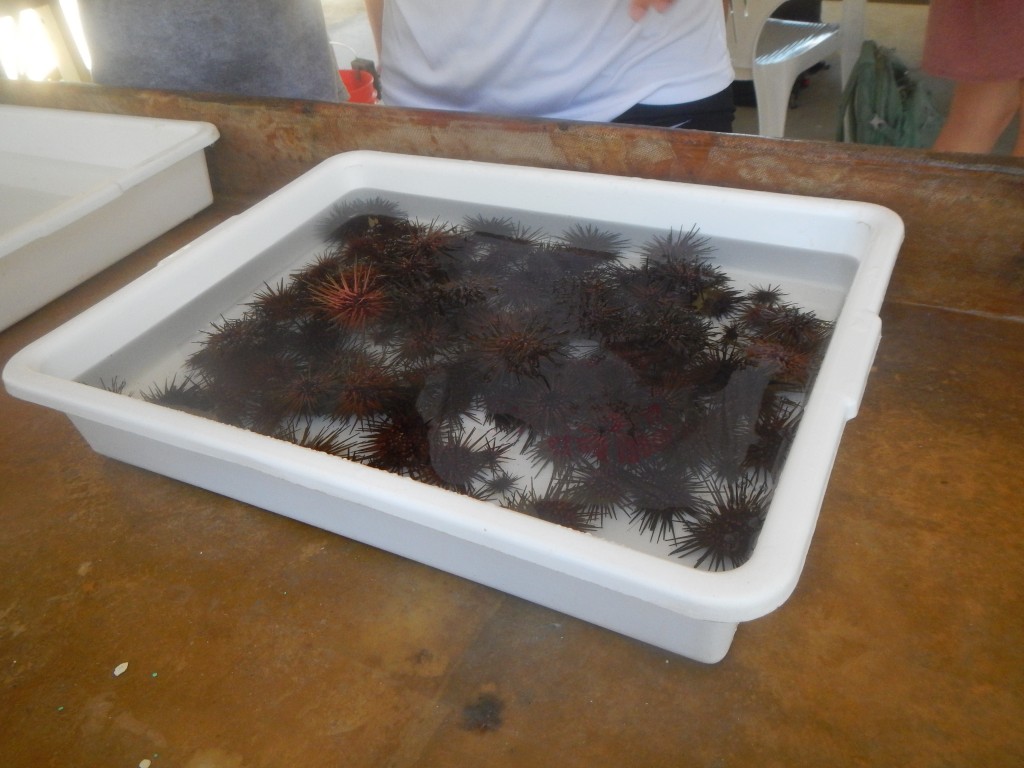The projects of the day consisted of comparing live stony coral cover and numbers of urchins between the Marine Protected Area (MPA) and a zone outside of the MPA at Glovers Reef. To measure coral cover, we laid down 7 transects that were each 100 ft long. Every 25 ft along the transect we measured two quadrats that were 2 ft by 2 ft. Each quadrat is fitted with twine to make 81 squares, or 64 intersection points. We looked at what was underneath each intersection and classified it as live stony coral, recently dead stony coral, macroalgae, other living organisms, or other dead/abiotic objects. Tomorrow we will analyze the data that we gathered, but we predicted that there would be a higher percent of live coral cover inside the MPA.
To count urchins, we timed how many urchins 18 people could collect in 25 minutes. Tomorrow we will compile all of the data and determine which urchin species were most common and quantify the difference between the MPA and the area outside the MPA.

We didn’t have very much time to explore the reef, but during data collection I was able to observe several species of parrotfish, including what I believe was a stoplight parrotfish. I also noted a large number of flamingo tongue snails, which are an interesting species of mollusk that is mostly an off-white shade with yellow spots that have a black outline. The snails are mostly found on sea fans.
As for green algae, I saw pinecone algae in the MPA. The pinecone algae are concentrated in sandy areas where they are able to attach their holdfast to the sand. The pinecone algae were smaller than I was expecting and were narrower, so they could be a slightly different species than I researched. There was also calcareous green algae that was growing on dead coral both in the MPA and outside of it. While the algae consisted of multiple species, I believe that most of them were species of Halimeda. Most of the green algae that I saw today was covered in sediment so it was difficult to identify the exact species.
